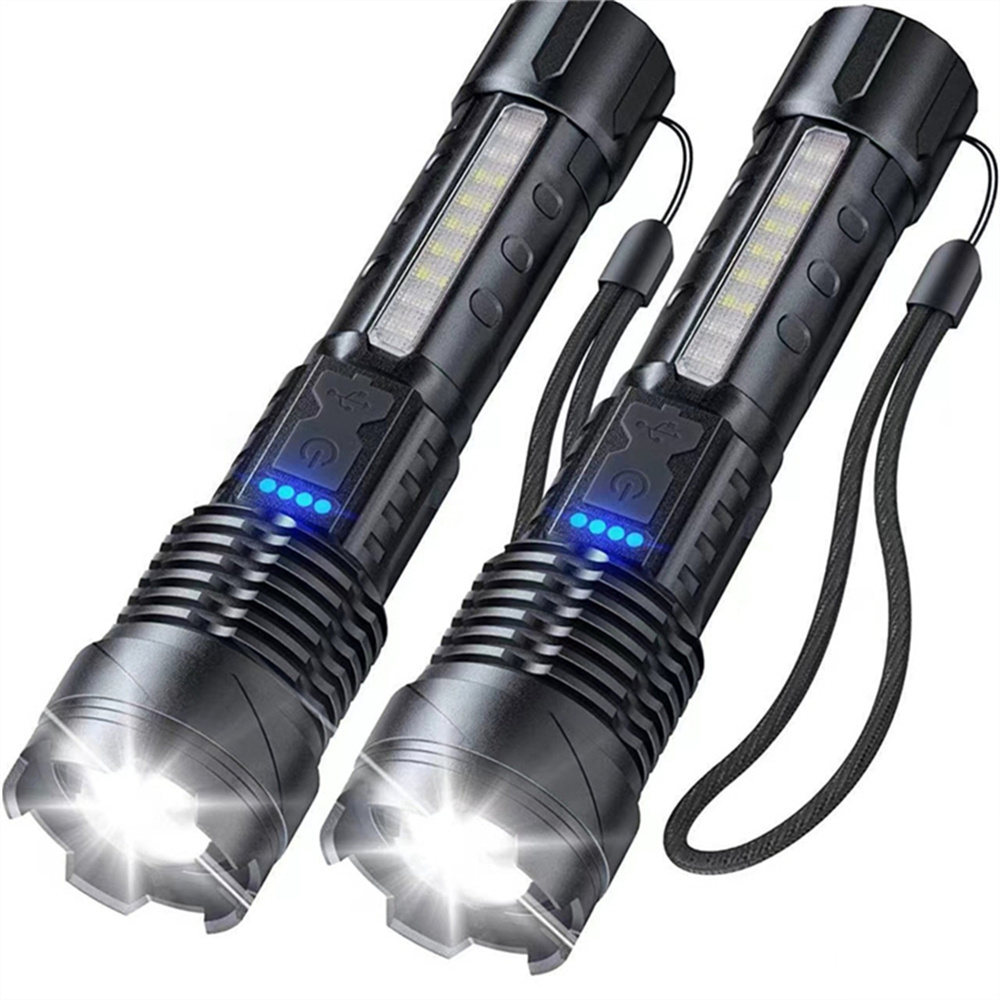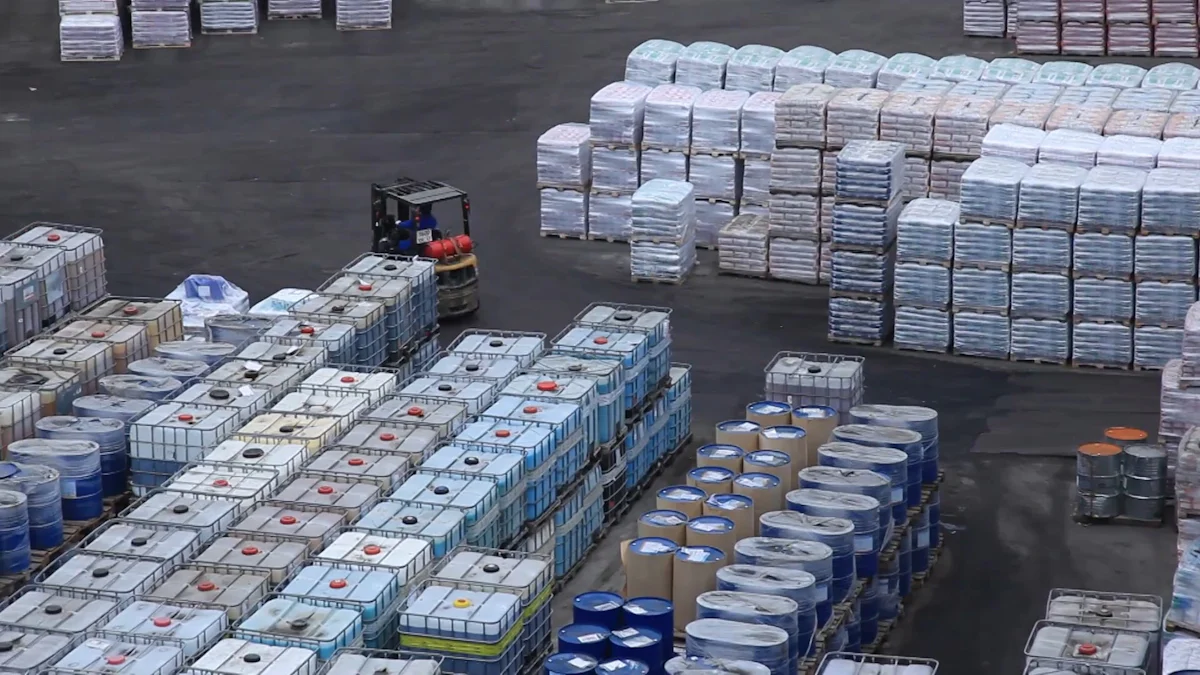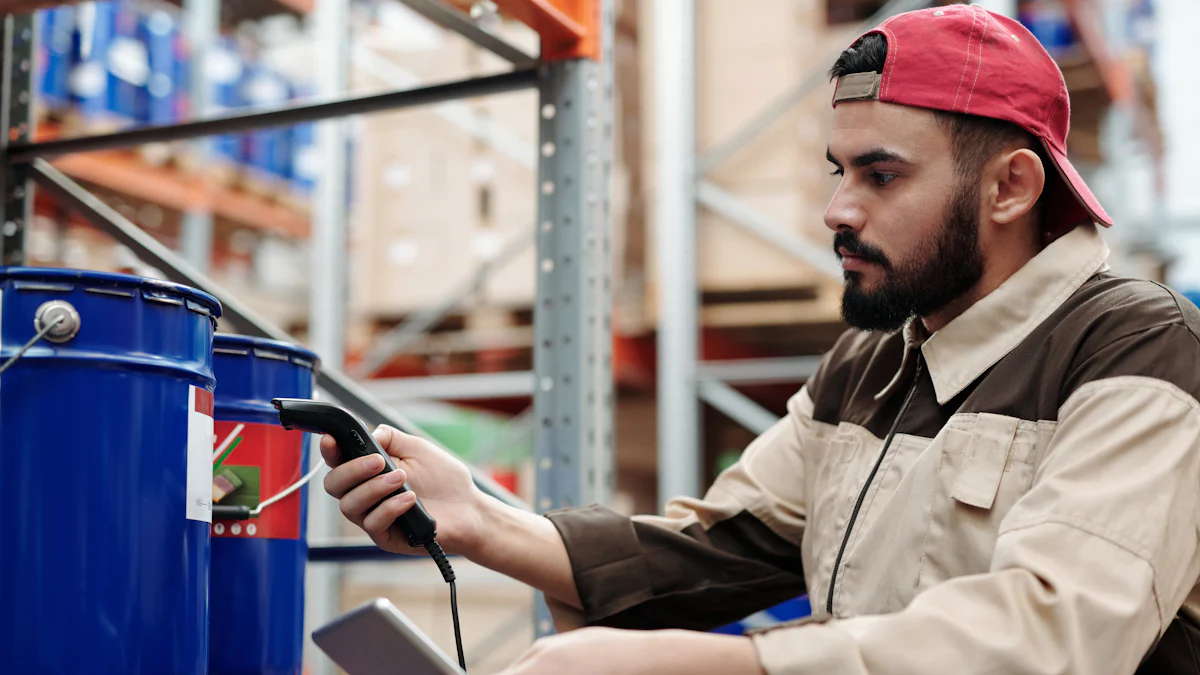How to Streamline Flashlight Shipping and Handling for the Middle Eastern Market

Efficient shipping plays a critical role in meeting the growing demand for flashlights in the Middle East. With the region's flashlight market projected to reach $6.83 million by 2024, businesses must focus on how to streamline flashlight shipping and handling for the Middle Eastern market to stay competitive. Consumers in this region value convenience and are willing to pay more for fast deliveries. By optimizing shipping, you can reduce costs, improve delivery speed, and enhance customer satisfaction. These practices not only lower operational costs but also build loyalty and encourage repeat purchases. For ecommerce businesses, efficient shipping ensures reliability and strengthens your brand reputation.
Key Takeaways
Fast shipping is important to meet flashlight demand in the Middle East. Making shipping easier can save money and deliver faster.
Picking good shipping companies makes customers happier. Choose ones with smart tools for quick delivery to homes.
Using local warehouses can cut costs and speed up shipping. Keep products near buyers to fill orders faster.
Strong but light packaging keeps items safe during shipping. Use good materials to avoid damage and save on costs.
Tracking systems let you see where shipments are in real-time. This helps customers trust you and feel more satisfied.
Understanding the Middle Eastern Market
Regional Shipping Challenges
Shipping in the Middle East presents unique challenges that can impact your ability to deliver products efficiently. Despite the region's strong infrastructure, last-mile delivery remains a significant hurdle. Many areas lack precise addressing systems, making it difficult to locate customers. This issue often leads to delays and increased shipping costs. Additionally, the dominance of offline retail in the market limits the growth of e-commerce, creating a need for innovative strategies to attract online shoppers.
Geopolitical tensions further complicate logistics. Conflicts in key areas, such as the Strait of Hormuz and the Bab el-Mandeb Strait, disrupt shipping routes. These disruptions result in longer detours, higher insurance premiums, and increased shipping rates. For businesses, these factors can inflate operational costs and delay deliveries. To reduce shipping costs, you must carefully plan routes and work with partners who understand the region's complexities.
Cultural and Logistical Factors
Cultural preferences in the Middle East heavily influence shipping and logistics strategies. Many consumers prefer cash on delivery (COD) as their primary payment method. While COD offers convenience for buyers, it complicates payment cycles and increases the risk of delayed payments. To address this, you should implement systems that streamline COD processes and encourage alternative payment methods.
Language also plays a critical role in connecting with consumers. Tailoring communication to Arabic ensures better engagement and builds trust. Additionally, a localized approach to last-mile logistics helps you align with cultural expectations. For example, understanding local customs and holidays can improve delivery timing and customer satisfaction.
Operational costs in the region are another factor to consider. High labor costs and limited awareness of e-commerce technology solutions can hinder efficiency. By investing in automation and educating your team about available tools, you can optimize processes and reduce costs. These steps will help you navigate the challenges of the Middle Eastern market while meeting consumer expectations.
Optimizing Shipping Processes

Selecting Reliable Shipping Partners
Choosing the right shipping partners is essential for success in the Middle East. Reliable partners can help you overcome logistical challenges and improve customer satisfaction. Look for companies that offer technology-driven solutions. These providers specialize in last-mile delivery, which is often the most challenging part of the process. They use advanced tools to ensure accurate and timely deliveries, even in areas with limited addressing systems.
Focus on service quality when selecting a logistics partner. While lower shipping rates may seem appealing, high-quality service ensures better customer experiences. Collaborating with partners who integrate technology into their operations can also streamline processes. For example, some companies offer real-time tracking and automated updates, which enhance convenience for both you and your customers. By working with partners who complement your strengths, you can reduce shipping costs and improve efficiency.
Utilizing Regional Distribution Hubs
Regional distribution hubs play a crucial role in optimizing shipping processes. Establishing hubs in strategic locations allows you to store inventory closer to your customers. This reduces transit times and shipping costs for ecommerce businesses. In the Middle East, cities like Dubai and Riyadh serve as excellent hubs due to their advanced infrastructure and central locations.
Using distribution hubs also helps you manage inventory more effectively. You can restock products quickly and respond to changes in demand. This approach minimizes delays and ensures faster deliveries. Additionally, regional hubs enable you to offer competitive shipping rates, which can attract more consumers to your ecommerce platform. By leveraging these hubs, you can streamline operations and enhance customer satisfaction.
Navigating Customs and Regulations
Understanding customs regulations is vital for efficient shipping in the Middle East. Familiarity with regional rules helps you avoid delays and unexpected costs. Ensure all documentation, such as commercial invoices and permits, is accurate and complete. Partnering with customs clearance experts can simplify the process and prevent errors.
Designating a reliable Importer of Record (IOR) is another effective strategy. An IOR handles compliance and ensures smooth customs clearance. You should also explore Free Trade Agreements (FTAs) to reduce tariffs and shipping costs for ecommerce. Real-time tracking and communication with your logistics partners can further minimize delays. By addressing these factors, you can navigate customs efficiently and maintain a seamless shipping process.
Enhancing Packaging and Handling

Lightweight and Durable Packaging
Choosing lightweight and durable packaging is essential for efficient flashlight shipping. It reduces shipping costs while ensuring the safety of your products. You should prioritize materials with high tensile strength, such as titanium or stainless steel, for excellent protection. These materials withstand pressure and prevent damage during transit. In high-temperature environments, plastic polymers are a better choice due to their slower heat conduction. Avoid using low-quality materials, as they compromise both safety and durability.
To further enhance protection, include adequate cushioning. Foam inserts or bubble wrap absorb shocks and vibrations, keeping flashlights secure. Lightweight packaging also lowers shipping rates, making your products more competitive in the market. By balancing durability and weight, you can reduce shipping costs and improve customer satisfaction.
Minimizing Transit Damage
Transit damage can lead to dissatisfied consumers and increased costs. To minimize this risk, use protective materials like foams and bubble wrap. These act as buffers against shocks and vibrations. Polymeric materials, such as expanded polystyrene, absorb impacts effectively. Flexible mounts can isolate flashlights from vibration sources, adding another layer of protection.
Snug-fitting packaging is equally important. Custom-molded inserts or foam padding secure flashlights and prevent movement during transit. Protective fillers, such as air pillows, provide additional cushioning. Sealed packaging, like airtight bags, shields products from moisture and dust. These measures ensure your flashlights reach consumers in perfect condition, enhancing their trust in your brand.
Eco-Friendly Packaging Solutions
Eco-friendly packaging benefits both your business and the environment. Biodegradable materials reduce waste in landfills, lowering non-decomposable waste. Sustainable packaging solutions produce fewer greenhouse gases, helping to reduce carbon emissions. By using renewable materials, you conserve natural resources and preserve biodiversity.
Switching to eco-friendly options also reduces water pollution. Avoiding harmful chemicals prevents contamination of waterways. These solutions appeal to environmentally conscious consumers, giving your brand a competitive edge in the market. Adopting sustainable practices not only reduces shipping costs but also aligns your business with global environmental goals.
Leveraging Technology for Efficiency
Tracking and Inventory Systems
Tracking systems improve the efficiency of flashlight shipping by providing real-time visibility. You can monitor shipments from the warehouse to the consumer’s location, ensuring transparency throughout the process. This visibility allows you to optimize delivery routes and communicate effectively with customers. Consumers appreciate timely updates about their orders, which builds trust and enhances satisfaction. Logistics management platforms also automate compliance documentation, saving time and reducing errors. By analyzing data, these platforms identify inefficiencies, helping you streamline operations and reduce costs.
Effective inventory systems are equally important for managing flashlight shipments. They help you maintain optimal stock levels and avoid disruptions. The following table highlights key features of robust inventory systems:
Feature | Description |
|---|---|
Real-time inventory tracking | Provides immediate visibility into stock levels, helping to avoid stockouts and overstocking. |
Automated reordering | Anticipates reorder needs based on set criteria, ensuring stock availability without excess cash tied up. |
Order management | Streamlines the order process, from tracking to automatic inventory updates. |
Reporting and forecasting tools | Analyzes sales trends and predicts future demand for optimal inventory levels. |
Supplier management | Monitors supplier performance to maintain a reliable supply of quality products. |
Product information management | Centralizes product data for accuracy and consistency across sales channels. |
Integration capabilities | Links with other business tools, such as POS systems, for smooth operations. |
By leveraging these features, you can ensure your inventory aligns with market demand, reducing costs and improving shipping efficiency.
Data-Driven Route Optimization
Data-driven route optimization reduces shipping costs and improves delivery times. Advanced algorithms analyze real-time data to determine the most efficient delivery routes. This approach minimizes travel distance, saving fuel and lowering operational expenses. AI-powered tools also enable dynamic route adjustments, ensuring timely deliveries even when unexpected challenges arise. Consumers benefit from faster shipping, which enhances their overall experience.
The table below outlines the key benefits of route optimization:
Benefit | Description |
|---|---|
Cost Savings | AI-powered route optimization minimizes travel distance and time, reducing fuel consumption and operational expenses. |
Improve Delivery Efficiency | Real-time data analysis enables dynamic route adjustments, ensuring timely deliveries and customer satisfaction. |
By adopting data-driven strategies, you can streamline your shipping processes and meet the expectations of the Middle Eastern market. These tools not only reduce costs but also enhance your ability to compete in the growing e-commerce sector.
Streamlining flashlight shipping and handling for the Middle Eastern market requires a combination of strategic planning and innovative solutions. You can achieve this by selecting reliable shipping partners, leveraging regional distribution hubs, and adopting advanced tracking systems. Lightweight and durable packaging reduces costs while ensuring product safety. Eco-friendly materials appeal to environmentally conscious consumers, enhancing your brand image. Combining small shipments into larger ones and using bulk discounts further lowers expenses.
Efficient processes bring long-term benefits. Spending less on shipping while delivering on time increases profits and customer loyalty. Faster delivery enhances satisfaction, as Middle Eastern consumers value speed over price. By meeting these expectations, you can boost repeat purchases and strengthen your market position.
FAQ
What are the best materials for flashlight packaging in hot climates?
Use materials like plastic polymers that resist heat conduction. These materials protect flashlights from high temperatures during transit. Avoid low-quality materials that may degrade under extreme heat. Lightweight options also help reduce shipping costs.
How can I reduce shipping costs for the Middle Eastern market?
Consolidate shipments to take advantage of bulk discounts. Use lightweight packaging to lower shipping rates. Partner with regional distribution hubs to minimize transit distances. Route optimization tools also help reduce fuel consumption and delivery times.
What is the most effective way to handle cash-on-delivery (COD) payments?
Streamline COD by using automated systems to track payments. Offer incentives for digital payment methods to reduce reliance on COD. Partner with logistics providers experienced in handling COD efficiently.
How do I ensure my shipments comply with Middle Eastern customs regulations?
Work with customs clearance experts to avoid errors. Ensure all documentation, like invoices and permits, is accurate. Designate a reliable Importer of Record (IOR) to handle compliance. Familiarize yourself with Free Trade Agreements (FTAs) to reduce tariffs.
Why is route optimization important for flashlight shipping?
Route optimization saves time and fuel by identifying the most efficient delivery paths. It ensures timely deliveries, even in areas with poor addressing systems. This improves customer satisfaction and reduces operational costs.
See Also
Finding Quality Flashlights for Your Import Business at Wholesale
Boosting Profits by Sourcing Flashlights from Wholesale Vendors
Top Wholesale Suppliers for Bulk Flashlight Purchases
